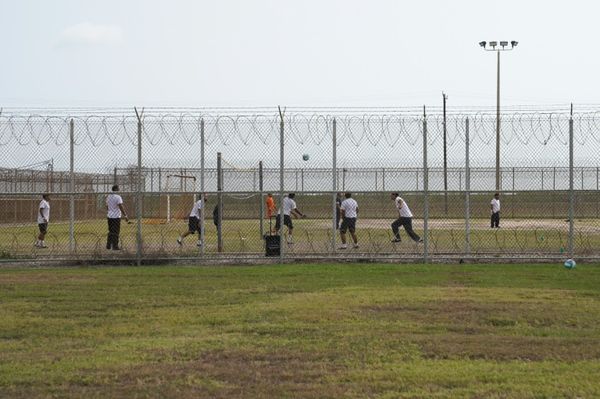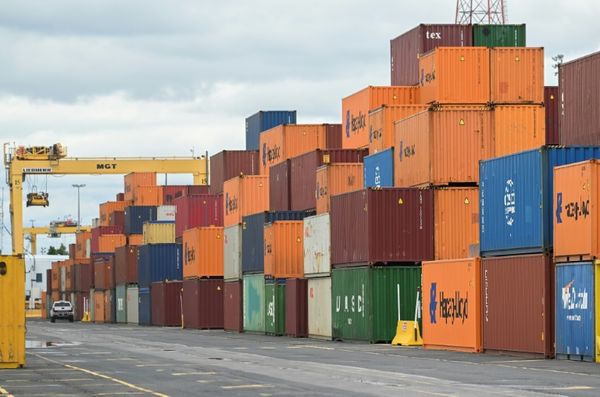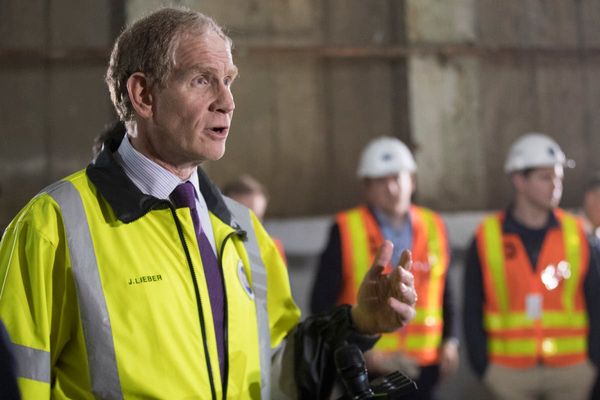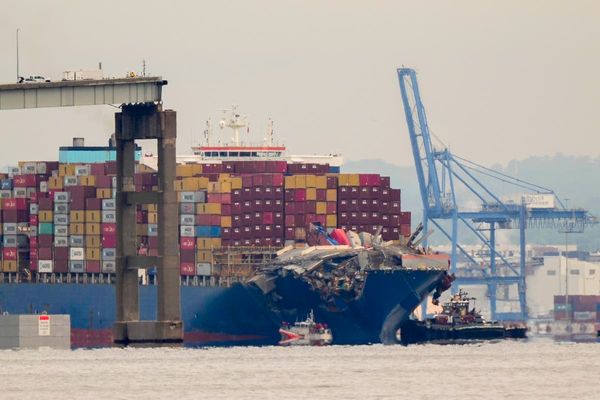Scientific advisers to the United Nations have delivered a scathing assessment of the NSW government's plans to raise Warragamba dam, prompting fears that the Blue Mountains could lose its world heritage status if the project proceeds.
In a letter to the federal government, the International Union for the Conservation of Nature (IUCN), said raising the dam "appears to be inappropriate in relation to the requirements of the World Heritage Convention".
Australia is a signatory to the World Heritage Convention, and under federal environment law, the federal environment minister is not allowed to approve a project that is inconsistent with the Convention.
Experts say if the project is approved anyway, the IUCN's advice could pave the way for embarrassing consequences for Australia.
"The ultimate outcome of that could be a listing of [the Blue Mountains] on the list of World Heritage in Danger or, eventually, a potential delisting of the site," said Tracey Ireland, a professor of cultural heritage at the University of Canberra.
The NSW government plans to raise Warragamba Dam in the Blue Mountains by at least 14 metres. The additional height would not be used for drinking water storage, but to catch flood waters, mitigating the impact of some floods on Western Sydney.
When that happens, thousands of hectares of the Blue Mountains World Heritage Area would be inundated instead.
The area that would be impacted includes some of the most important remaining habitat for the critically endangered regent honeyeater bird, of which fewer than 300 are thought to exist. It's also home to a range of other endangered animals and some plants unique to the area.
In 2019, UNESCO's World Heritage Committee requested Australia produce its Environmental Impact Statement (EIS) for the project so it could be reviewed by the IUCN.
The IUCN's review, published this week by the NSW government, found the EIS self-contradictory, non-compliant with the requirements of an environmental assessment, and concluded that progressing with the project could be inconsistent with the World Heritage Convention.
For the IUCN's advice to have any force, it would need to be taken up by UNESCO's World Heritage Committee, which is made up of representatives from 21 countries.
The committee could ask Australia not to progress with the plans, or warn of consequences if it does.
Blue Mountains could lose World Heritage status: expert
While the EIS argued the project would not materially impact the Outstanding Universal Values of the site — the features that made it worthy of World Heritage — the IUCN review concluded the information in the EIS contradicted that claim, and would harm those values.
The independent review also concluded the EIS, conducted by consultants engaged by Water NSW, failed to properly consult with traditional owners, failed to assess how the impacts of the 2020 fires overlap the impacts of the project, and failed to adequately survey the site for plants and animals that will be destroyed.
Finally, it concluded that the government's heavy reliance on "offsets" to compensate for damage was not appropriate.
"This technical review is saying very clearly that raising Warragamba Dam wall is totally inconsistent with Australia's obligations under international law and the World Heritage Convention," said Harry Burkitt from the Colong Foundation for Wilderness, which has been campaigning against the dam.
He said the review showed the dam project, should it proceed, would likely see the Blue Mountains added to the list of World Heritage In Danger, or even stripped of its World Heritage status.
Mr Burkitt said such a move would be deeply embarrassing for Australia and would harm its tourism industry.
"The Blue Mountains is one of the biggest drawcards for tourists who come to Australia, he said.
"Millions of visitors a year come to the Three Sisters up at Katoomba, and if they raise this dam wall, remember: you're going to be able to see the new lake formed by this dam while you're standing at the Three Sisters."
Peter Valentine, an expert on World Heritage from James Cook University, agreed those options were open to UNESCO and without political interference would likely occur.
"I'm assuming that the response from the World Heritage Committee in consideration of this would be to urge the Australian government to halt the project," he said.
Before proceeding to the next stage of the Warragamba dam project, Water NSW needs to wait for responses to the draft EIS, and then seek final determination from the NSW Department of Planning, Industry and Environment, which is expected to take months.
The project will ultimately need to be approved by the federal environment minister under federal environment law. Professor Valentine said given this advice by the IUCN, Environment Minister Sussan Ley could be in breach of her authority if she approved the project.
In a statement, a spokesman for Ms Ley said: "Before making any decision on the proposal, the Minister will consider the New South Wales Government's environmental assessment and all other matters required under national environmental law."
Warragamba dam project 'at odds' with World Heritage obligations
The IUCN review comes after a host of other organisations and government agencies submitted reviews critical of the NSW Government's assessment.
Heritage NSW, a NSW government agency, wrote that it did not consider the "natural and cultural values of the national parks estate and Greater Blue Mountains World Heritage Area have been adequately assessed or justified".
A submission by NSW Department of Planning Industry and Environment echoed those concerns and said: "Notably, the EIS makes incorrect assumptions about how to determine World Heritage values, and therefore how to evaluate impacts on those values."
The NSW Environmental Protection Agency said the EIS did not properly assess the potential impacts of construction activities associated with building the additional dam wall.
Meanwhile, the Australian branch of UNESCO's official cultural advisers, the International Council on Monuments and Sites (ICOMOS), wrote that the EIS was "fundamentally deficient" and the "very nature of the project is at odds with … obligations that arise from the World Heritage Convention."
Despite the criticisms, NSW Minister for Western Sydney Stuart Ayres has said the project will go ahead.
"Absolutely it will happen," he said on 2GB radio last week.
"It's imperative that Western Sydney gets flood mitigation protection by raising the Warragamba dam wall."
Minister Ayres told the ABC he didn't support the views of the IUCN.
"It's important to recognise that unlike a water storage dam that holds water permanently, the higher wall at Warragamba will only hold water above the current storage level on a temporary basis: a few hours, up to 14 days," he said.
"We are confident that given the temporary and limited areas covered by inundation that environmental impacts can be managed."







